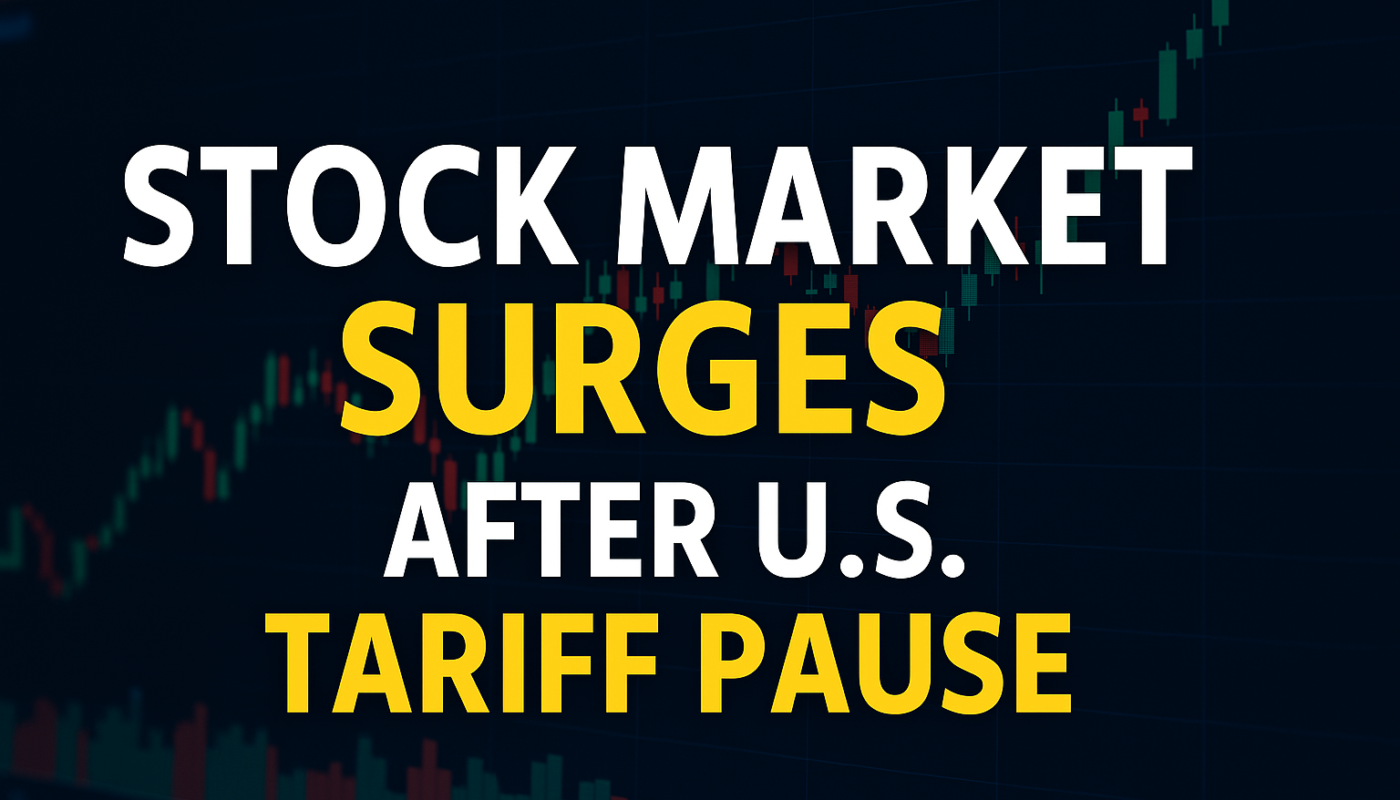U.S. Tariff Pause
– What Investors Need to Know in 2025 Global Market
In a surprising policy shift on April 9, 2025, U.S. President Donald Trump announced a 90-day pause on new tariffs for most trading partners — except China. This unexpected development sent global stock markets into a massive rally, reversing weeks of turbulence and uncertainty.
But is this relief short-lived? Or is the world economy finally turning a corner?
Let’s break down the latest updates, key market reactions, and what investors should watch for in the coming weeks.
🌍 U.S. Tariff Pause Sparks Global Market Optimism
For weeks, global investors were on edge amid fears of a full-scale trade war. The announcement of a tariff reprieve, excluding China, has acted as a temporary pressure release on the financial markets.
Within hours of the announcement:
- 📈 The Dow Jones Industrial Average surged over 1,500 points
- 📈 The S&P 500 posted one of its biggest single-day gains since WWII
- 📈 The NASDAQ Composite climbed 4.3%, led by a tech rebound
global stock market rally, US trade policy 2025, impact of tariffs on economy, market recovery predictions
What Triggered the Market Rally?
The tariff pause was largely unexpected, and it signaled a possible cooling of trade tensions — at least temporarily. Here’s what drove the sudden surge in investor confidence:
- Reprieve for Key Sectors
Industries such as automotive, agriculture, and electronics were under significant strain from rising import costs. The 90-day suspension is expected to reduce cost pressures and improve quarterly earnings. - Positive Earnings Forecasts
With reduced supply chain costs and tariff risks, several U.S. corporations revised their Q2 earnings projections upward, fueling further investor enthusiasm. - Hopes of Diplomatic Progress
Although China was excluded from the tariff pause, the gesture toward other nations has reignited hope that broader trade negotiations may follow.
What About China?
While the world’s second-largest economy remains under tariff pressure, China’s retaliatory measures are already in motion — including 34% tariffs on select U.S. goods, mostly in the agricultural and tech sectors.
This creates a split-screen scenario:
- Other nations may enjoy short-term trade normalization
- The U.S.–China trade relationship remains in fragile and escalatory territory
U.S.–China trade war update, international tariff conflict, economic retaliation China 2025
🇮🇳 India & Asia Respond
The Indian stock market also reflected the positive global sentiment. On April 11:
- The GIFT Nifty Futures surged 2.5%
- Market indices are projected to open higher, driven by global cues
- However, volatility persists due to tech earnings misses and ongoing global trade uncertainty
Companies like Tata Consultancy Services (TCS) reported lower-than-expected earnings, citing disruptions caused by U.S. tariff instability as a key factor.
🔍 Key Market Indicators to Watch
- Volatility Index (VIX)
The U.S. Volatility Index jumped 55.8% to 21.43, its highest weekly gain since March 2020, indicating ongoing investor anxiety despite the short-term rally. - Commodity Prices
Tariff shifts affect crude oil, soybeans, rare earths, and more. Keep an eye on commodity fluctuations as they affect both import costs and export margins. - Bond Yields
U.S. Treasury yields have remained volatile, with the 10-year note swinging sharply, signaling market uncertainty around interest rates and inflation policy.
stock market volatility 2025, treasury bond outlook, VIX spike analysis
Long-Term Investor Outlook
Despite the relief rally, analysts urge caution.
✅ Bullish Case:
- The U.S. government uses this pause to renegotiate trade terms
- Inflation softens, allowing the Federal Reserve to adjust rates
- Consumer spending stabilizes, boosting corporate profits
❌ Bearish Case:
- Tariff escalation with China intensifies
- Consumer confidence remains weak
- Global recession fears return, especially if energy prices spike or interest rates stay elevated
recession risk 2025, inflation vs interest rate strategy, best sectors to invest during downturn
Investment Strategy for 2025
Here are expert-backed recommendations on how to protect and grow your portfolio during these uncertain times:
1. Focus on Recession-Resistant Sectors
- Healthcare
- Utilities
- Consumer staples
These sectors tend to perform well even during economic downturns.
2. Diversify Internationally
With the U.S. in potential trade disputes, consider exposure to:
- ASEAN nations (Vietnam, Thailand)
- Latin America (Mexico, Brazil)
- European infrastructure ETFs
3. Hold Safe-Haven Assets
- Gold, silver
- U.S. Treasury bonds
- High-yield savings or money market funds
4. Rebalance Portfolio Quarterly
Don’t just “set it and forget it.” Adjust your allocations based on:
- Earnings updates
- Geopolitical shifts
- Federal Reserve policy changes
Final Thoughts: Relief or Rebound?
While the U.S. tariff pause has triggered a global market surge, analysts caution that the relief is likely temporary unless it leads to lasting diplomatic progress and policy consistency.
Volatility remains the theme of 2025, and smart investors should stay informed, adaptable, and diversified.
💬 “Markets love hope — but they trust results.”

I am NIKS. I have more than 3 years of blogging experience. May provide information related to new jobs and news on this website.



